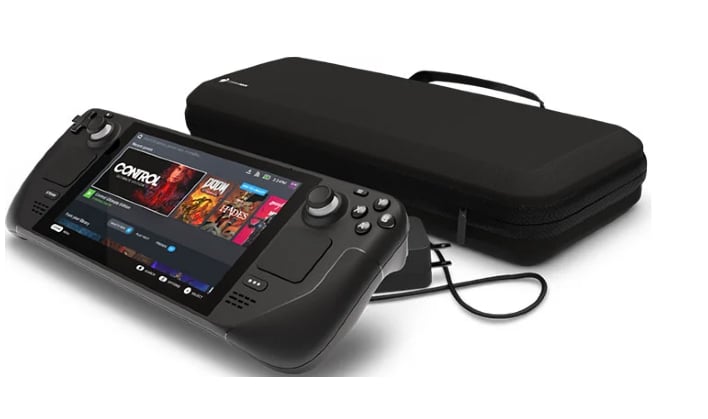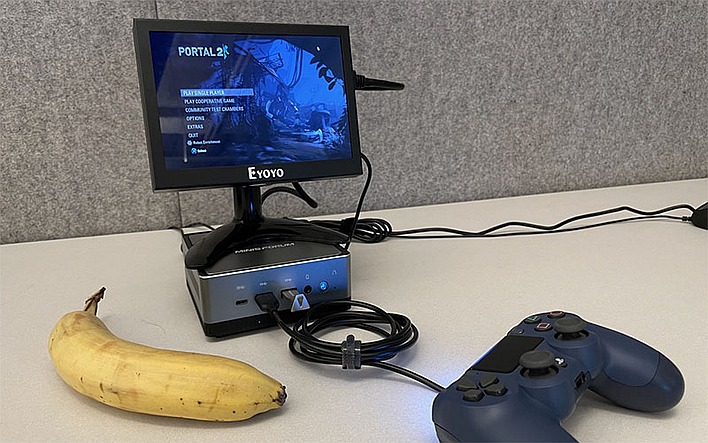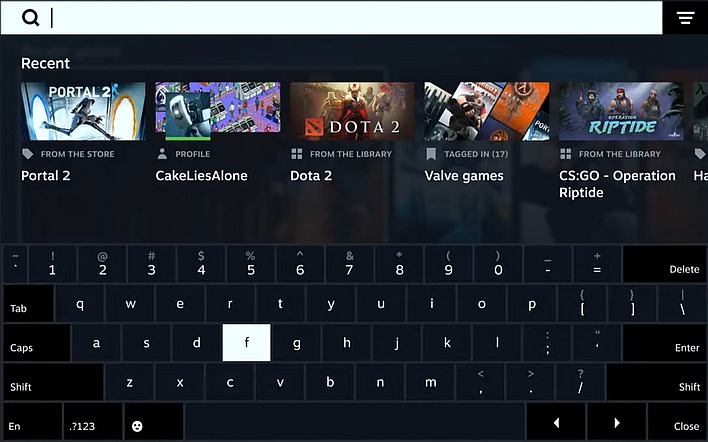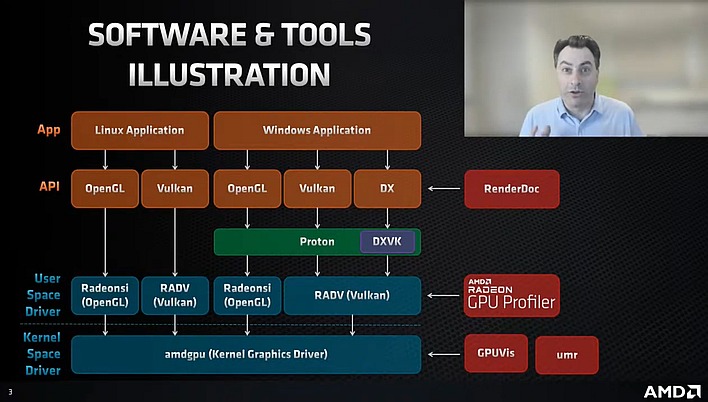Valve Details Steam Deck’s AMD Aerith CPU, FSR, Game Load Time, And You Can Build One Too

We just got some more details on that hardware and the ecosystem surrounding it from a Valve livestream targeted at developers. Titled simply "Steam Deck Development Live Stream" on YouTube, the actual name of the stream was apparently "Steamworks Virtual Conference: Steam Deck," according to hosts Erik Peterson and Kaci Atchison Boyle—both Valve employees themselves.
You can watch the stream below for yourself if you want, but we'll go over the stream in exhausting detail. Valve brought on various members of the Steam Deck development team to talk about the Steam Deck specifically from the perspective of developers who want to create software for it. We're not game developers here at HotHardware, but we know enough to make sense of what Valve was saying, and sifted the the golden nuggets from the flow of information in the stream.
First up was Lawrence Yang, a designer specifically working on the Steam Deck dev kit team. He apologized that Valve simply hasn't been able to meet demand for the dev kits, but noted that they have over five hundred units in the hands of developers already. For folks who want to develop for the Steam Deck, but weren't fortunate enough to get a kit, he noted that the dev kit has no particular differences from the retail units. Since the Steam Deck is essentially just a portable PC, he notes that you can slap Manjaro Linux on just about any machine and get a serviceable testing environment, since Steam is included. (The Steam Deck itself doesn't use Manjaro, but it makes an easy and familiar testing environment for Windows devs.)

In fact, the power management of the Steam Deck is more of the more customized aspects of its software. Whereas most mobile devices are heavily reliant on "burst speeds" or short-term turbo behavior, the Steam Deck instead emphasizes consistent performance over extended periods. That's because you don't typically play video games for 30 seconds at a time. Yazan noted repeatedly how the system will usually give the same performance whether you are playing in handheld mode, docked mode, downloading updates, or even in a hot room. He also noted that there's no "artificial" power limit in place, which we suspect means that the hardware will simply maintain its own limits for thermals and current draw. Due to that, he suggests developers implement strict FPS limits to maintain battery life.

The brief Q&A section with AMD toward the end of the stream revealed a very curious tidbit: apparently, Valve will be implementing AMD's FidelityFX Super Resolution (FSR) at the system level. AMD's Sebastien didn't offer up any details on that point whatsoever, but it's difficult to imagine using FSR given the system's already-low resolution of 1280x800. Using FSR to improve performance would mean reducing the render resolution even lower; below 1280x720, many newer games can't even render correctly, as the engine's console-based assumptions start to fall apart. It will be fascinating to test this once we get the system in our hands.

One concern that some folks voiced after the initial announcement was that the Steam Deck would have wildly-varying boot and load times depending on which SKU you got. Yazan put those fears to rest in the stream, noting that even using an SD card was only 18% slower for game load time, and 25% slower on system boot-up compared to the fast NVMe drive on the most expensive model. The miniscule differences in real-world performance between the NVMe SSDs and the 64GB eMMC module on the cheapest model shouldn't even be noticeable in practice.
The USB-C port on the Steam Deck supports USB 3.2 Gen 2, allowing for a maximum transfer rate of 10 Gbps. It also supports DisplayPort 1.4 with Display Stream Compression (DSC), which allows the Steam Deck to drive two external displays running in 3840x2160 resolution at 60Hz, simultaneously. Alternatively, you can run a single display and still retain USB functionality. For charging, the Deck uses a 45-Watt USB-C power supply that can fast-charge the battery even when the system is under full load. It also can supply 7.5W to external devices, like webcams or mice.
After the hardware discussion, there were two segments focusing on software. Valve's Tom Bui and Tucker Spofford spoke about the changes coming to Steam to support the Deck, while Pierre-Loup Griffais talked about the Proton layer that sits between Windows games and the Linux-based SteamOS. Unsurprisingly, all of the Steam features that Steam users enjoy will "just work" on the Deck. Game hubs, forums, player profiles, the activity feed, notifications, cloud saving, remote play, and so on—everything is supported and customized for easier access on the Deck.

Some of the changes being made for the Steam Deck will come over to the desktop client, as well. There's a new unified search that crawls all types of Steam content, including store items, workshop items, discussions, community content, et cetera. There's also going to be a new, unified system for Steam notifications like game news, patch notes, and friend events, and all of that is accessible via a hardware button on the Steam Deck. Valve's replacing the Steam configurator with one that has a more intuitive UI, and perhaps most notably, Steam's Big Picture feature is getting replaced with a new experience initially crafted for use when the Steam Deck is connected to an external display.

In his section, Pierre-Loup noted that Proton is in a state where most games already work well, and new titles often "just work" out of the box—so much so that when asked if Steam prefers developers to target Proton or a native Linux client for their game, he remarked that there was no preference. Proton uses DXVK to handle conversion between Windows' proprietary DirectX graphics API and the open-source Vulkan API, and Pierre-Loup noted that this requires dynamic recompilation of shaders, a task that can cause hitches and stutters during gameplay. To help avoid this, Valve will be pre-caching compiled shaders for the Steam Deck on its cloud servers, allowing gamers to download pre-compiled shader packages for popular DirectX games to avoid the bad experience of shader compilation stutter.
The rest of the stream was generally not too interesting to the layperson, targeted at developers as it was. There were still a few other interesting details to glean from the presentation, though. Tom Bui noted that there is the capacity for Steam games to have Deck-specific depots with lower-quality assets to save disk space and improve performance on the Steam Deck version. He also commented that SteamOS will see another release as a general-purpose PC OS eventually.
While we still have to wait until next year to get our hands on a Steam Deck, Valve did at least note that it's working to bring the Steam Deck to more countries, specifically mentioning Australia and Japan. Here's hoping Valve's handheld makes a splash when it launches.

